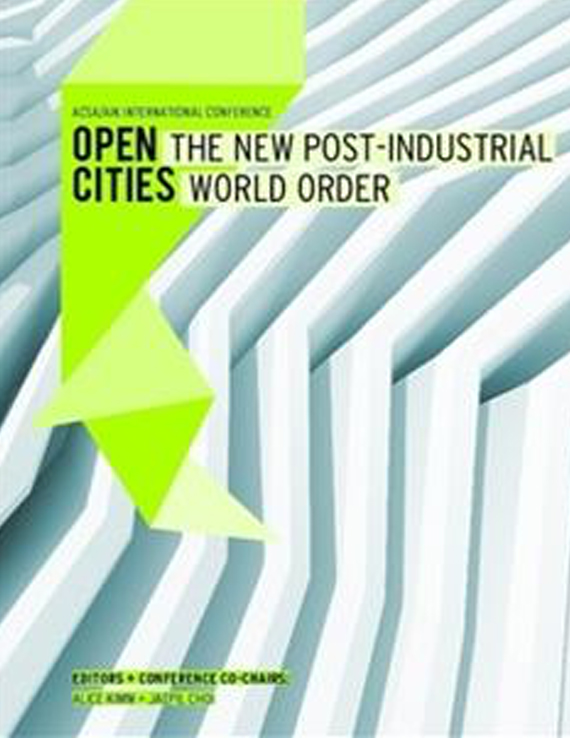Author(s): Chip Clark, Jonathan Grinham, Nathan King, Rachel Vroman & Stefanie Pender
This paper presents the development and evaluation of analogue strategies forrobotic tooling that engage material and process while by-passing the three dimensionalmodeling environment with the goal of introducing the machine as adesign tool that supports, rather than clouds, the development of fundamentalcritical judgement necessary at the foundation level. Within the context of wellestablishedfoundation design exercises, a processing-based robotic programmingworkflow was created that enables students to translate hand drawings to machinecode that can be used to create three dimensional parts with ruled surfacegeometry. The programming workflow was tested during the creation of physicaltooling for kiln-based glass casting thus translating the hand drawings to threedimensionalglass artifacts by way of iterative robotic material manipulation.Fundamental design education has struggled with the incorporation of digitaldesign and fabrication technology. In many cases the introduction of the ‘digital’into early design curricula is at odds with well-established pedagogical constructsthat develop material understandings of action and result through physical iterativeprocesses. That resistance to non-physical simulated interfaces, devoid of thephysical and the material, is warranted, but it should not be so quickly applied todigital material-processing technologies. Those technologies are being inaccuratelyaligned virtual design environments. This perception is exacerbated by the digitalinterface and modeling platforms that, at the foundation level, offer no connectionto material behavior and completely lack the feedback necessary to criticallyevaluate design decisions outside of the virtual environment thus are incapable ofinforming physical perceptions. It is the three dimensional digital interface that allowsdecisions, or rather uninformed actions, to be made with haste and in whichloose ideas are transformed into virtual representations of ‘things and stuff’ at anaccelerated rate; where at the foundation level a fundamental tactile experience isnecessary to understand the world and the consequences of our actions within it.The industrial robotic manipulator offers the potential for design students to developa material idea, the tool to realize it, and programmed spatial movementsthat allow rigorous iterations and exploration of key parameters and variableswithin a controlled material process. Despite the potential for incorporation atthe foundation level the industrial robot is often relegated to advanced coursesand research that tend to isolate the tool as an exception rather than a rule ofintegrated opportunity. In order for the field of Design Robotics to enjoy lastingimpact it must become integrated within the fundamental design curricula. Thedesign experiment described in this paper presents a singular example of the potentialfor the industrial robot to engage material, in a tangible manner, throughan analogue design process that provides students with an acute awareness of theconsequences of design decisions outside of the simulated digital design environments.Here the robot is a tool by which we realize design ideas within physicalmaterial/process parameters and therefore experiments such as these positionthe robot firmly in the context of foundation design education.
Volume Editors
Alice Kimm & Jaepil Choi
ISBN
978-0-935502-91-6

 Study Architecture
Study Architecture  ProPEL
ProPEL 
